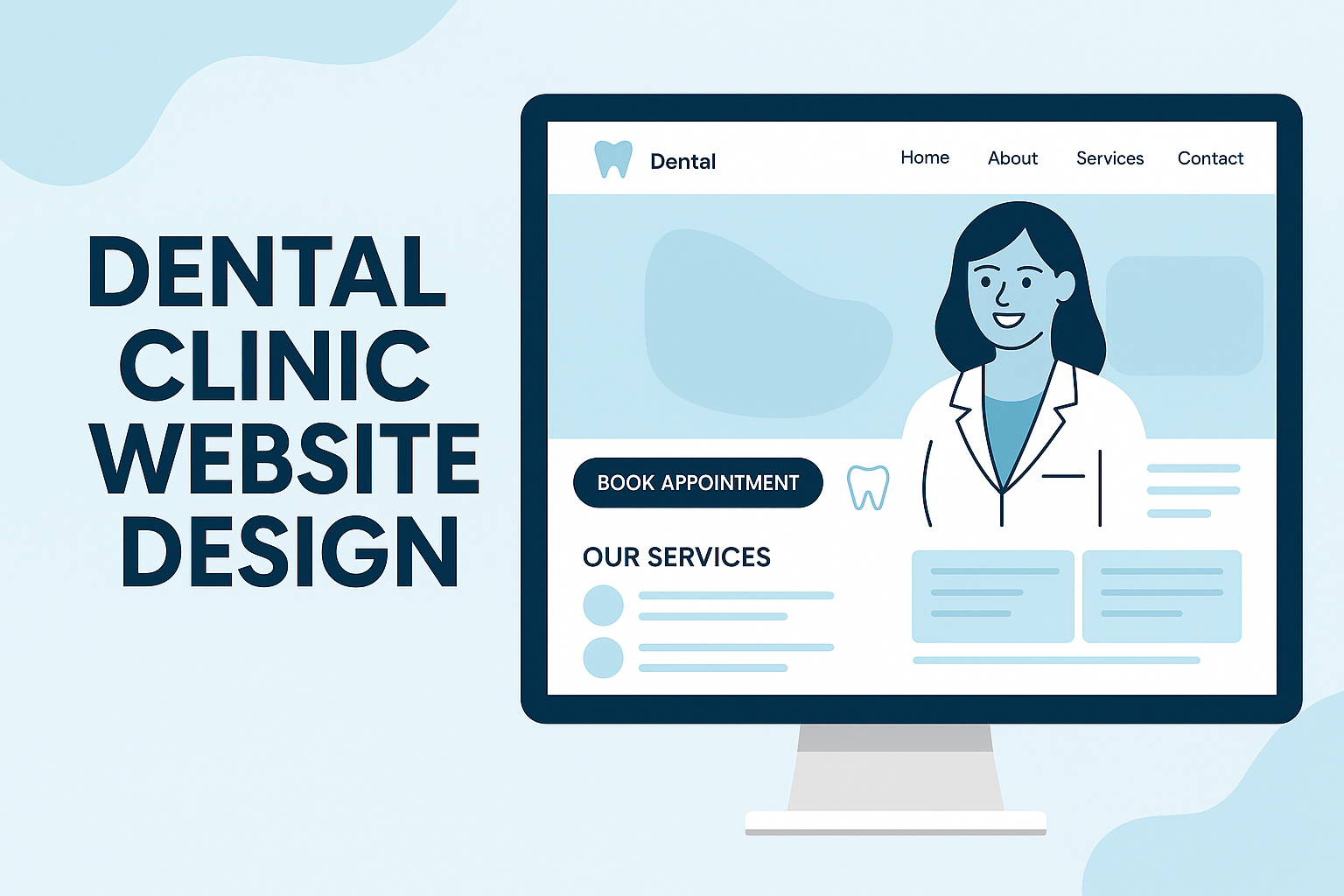In the digital age, a dental clinic’s website serves as more than just a source of information. It is the first point of contact for new patients, a tool for engagement, and a reflection of your practice’s professionalism.
As we move into 2025, website design trends are becoming increasingly advanced, patient-focused, and aligned with the expectations of today’s tech-savvy users. Staying updated with these trends is crucial for building credibility, attracting new patients, and maintaining a strong digital presence.
In 2025, dental clinic website design continues to evolve, driven by technological advancements and user expectations. One of the leading trends is mobile-first design. With the majority of users accessing websites on smartphones, dental websites must be fully responsive and optimised for all screen sizes to deliver seamless navigation and fast-loading experiences.
Personalisation is also becoming a focal point. Websites are increasingly using AI-powered chatbots, tailored service recommendations, and patient portals that offer appointment booking, history access, and reminders—creating a more engaging, patient-centric experience.
Minimalist design with bold visuals is on the rise, featuring clean layouts, ample white space, and high-quality images or videos that highlight the clinic’s staff, services, and environment. This not only enhances aesthetic appeal but also builds trust.
Moreover, SEO-focused content and fast page speeds are essential for visibility and performance. Practices are integrating schema markup, local SEO elements, and structured content to rank higher in search results.
Lastly, accessibility compliance is non-negotiable. Websites are now designed with features like keyboard navigation, screen reader compatibility, and appropriate colour contrasts to ensure they are inclusive for all users.
User experience (UX) remains at the forefront, with streamlined navigation, fast load times, and intuitive layouts becoming the standard. Clinics are also integrating AI-powered chatbots and personalised portals, enabling patients to book appointments, view treatment history, and receive reminders—enhancing both convenience and engagement.
Visual appeal is another key factor. Clean, minimalist layouts paired with high-resolution images and professional videos are used to build trust and reflect a modern, welcoming practice. Clear call-to-actions and service highlights are designed to convert visitors into patients.
Embracing AI for Personalized User Experience
Artificial Intelligence is playing a transformative role in how patients interact with websites. In 2025, AI-driven chatbots, intelligent content recommendations, and behavioral tracking are helping clinics create personalized experiences.
From guiding users through appointment bookings to answering common questions in real-time, AI ensures that patients get the information they need without unnecessary delays.
When integrated thoughtfully into dental clinic website design, AI improves functionality and fosters engagement by making the user journey more intuitive and efficient.
Prioritizing Mobile-First Design
With a majority of users accessing websites via smartphones and tablets, having a mobile-optimized site is essential. Mobile-first design ensures that all features, visuals, and content are tailored for smaller screens without compromising quality or usability.
Search engines like Google continue to prioritize mobile-friendly websites in their rankings, making responsive design a critical aspect of effective website design services. Ensuring fast loading times, easy navigation, and click-to-call functionality can significantly improve user retention and lead conversions.
Clean, Modern, and Patient-Centric Aesthetics
Website aesthetics are becoming more refined and aligned with patient psychology. Today’s design trends favor minimalistic layouts, soothing color schemes, and high-quality imagery that reflects authenticity. Instead of relying on generic stock photos, many clinics now showcase real staff members, office spaces, and patient testimonials to build trust.
This humanized approach to dental clinic website design helps potential patients feel more connected to the practice before even stepping into the office.
Enhancing Accessibility for All Users
An inclusive website ensures that everyone, regardless of ability, can access and interact with your content. Features such as screen reader compatibility, text-to-speech tools, keyboard navigation, and high-contrast options are becoming standard components of modern web design.
Prioritizing accessibility is not just a compliance requirement but a reflection of your clinic’s commitment to patient care. In 2025, inclusive website design is recognized as both a legal and ethical necessity.

Seamless Online Booking and Integration
Convenience is a top priority for patients. Modern dental websites now offer real-time appointment scheduling, enabling users to view available time slots and book appointments instantly. These systems are often integrated with internal management software, enabling automated reminders, digital form submissions, and even virtual consultation capabilities.
This level of efficiency not only improves the patient experience but also reduces administrative burdens on your staff, enhancing overall productivity.
Data Privacy and Security
With the increasing use of digital interaction, protecting patient data has become a critical focus. Secure Socket Layer (SSL) encryption, HIPAA-compliant contact forms, and detailed privacy policies are all essential components of a safe website.
Patients need to trust that their personal information is safe. A strong emphasis on cybersecurity in your website design reinforces your clinic’s professionalism and reliability.
Conclusion
In 2025, the standards for dental clinic website design are higher than ever. Patients expect speed, accessibility, personalization, and security. By adopting these modern design trends, dental practices can enhance the user experience, foster stronger patient relationships, and remain competitive in the digital landscape.
Investing in a forward-thinking website is no longer optional; it is a strategic necessity. A well-designed, functional, and secure site is the foundation for growth, credibility, and long-term success in today’s healthcare environment.



